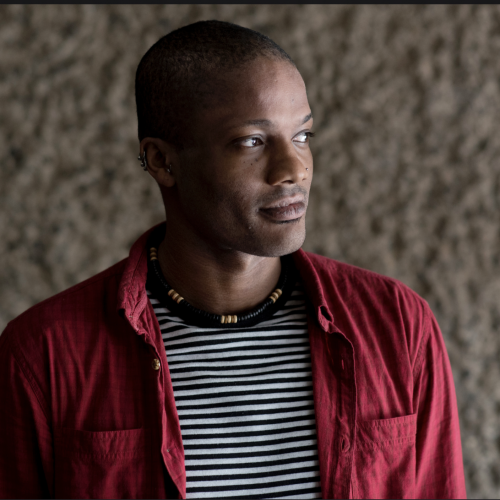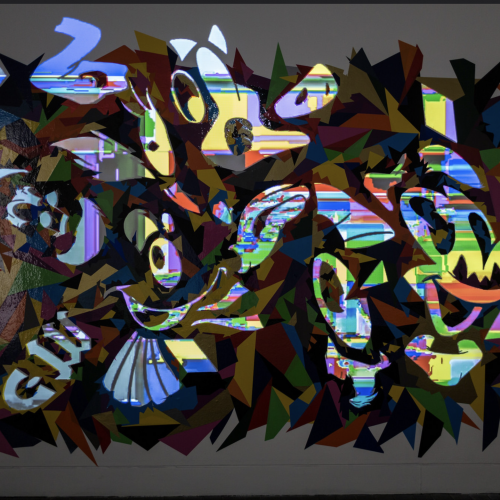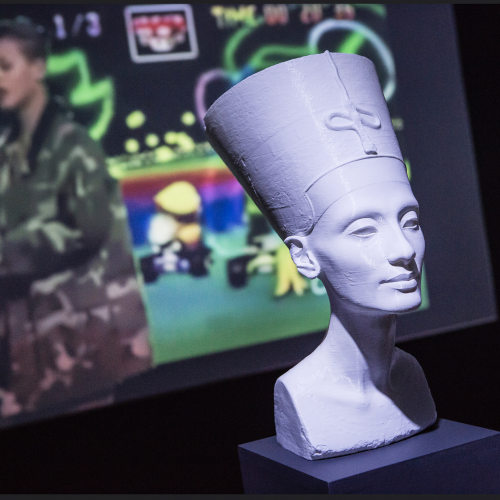
by Oğulcan Ekiz
Antonio Roberts is a New Media artist and a curator based in Birmingham, UK. In both his artistic and curatorial practices one can observe the topics of open source software, free culture and collaborative practices surrounded by a stimulating criticism of the copyright law. Following is an interview with him I have had a chance to hold on the relationship between his art practice and copyright.
One of the things that fascinates me most about your work is that your critique of the copyright regime is a creative stimulant for you. How did this relationship start? What is it about copyright that attracts you?
My use of copyright as a creative stimulant started taking shape around 2008 but my general interest in this area started several years earlier. A friend introduced me to open source software around 2003. As I got out of the university, I decided that if I wanted to pursue a career as an artist I needed to stop pirating the software. I either needed to buy the software or look for alternatives. That is when open source software started becoming a lot more political to me. I started to think “why are the tools costing so much, why are we letting other companies dictate how we are create?” So, it was not just about convenience at that point. It became more like a part of my practice to go against the norm, to take control of the software and tools I use to express my creativity. This is more about the software side of things. But at the same time I also started thinking about copyright. How can it be that one person or one entity can use copyright to have a stranglehold on a creative idea? How can one person prevent others from creating?
The open software movements develop their own communities in the process of creativity, whereas, copyright law is focused on the idea of the sole author. Do you think there is a conflict here?
It is just more so with software. Because you are all trying to create one thing for one goal; a piece of software that everyone is going to use. When it comes to the artwork I still do find that creating the artwork is a solitary experience. But, I would say a lot of people who use open source software make a point of it and make it a theme of their work. In talking about their use of open source software, they become part of this niche community of artists, so we get our support that way. I think we know that we are all going against the established ways of doing things and that is what unites us.
Do you think that copyright law favours some types of creativity over others?
Copyright obviously favours the idea of the sole author and originality. However, I think it is false to assume that originality exists as a pure phenomenon. No one creates in isolation. We all take inspiration from the things around us and then transform it in our own unique way into a new piece of art.
So, although copyright law claims to favour the idea of the sole author I think that is more about who has more evidence to suggest that they were “first” to create something. And even then, only those who have the resources to be able to enforce copyright – an understanding of copyright and/or lawyers – will benefit it.
Basically, copyright affects everybody. We all have it automatically. But very few of us understand it. And then, even fewer are able to hire lawyers and defend our copyright. So, it really favours those individuals, companies or institutions who have built up an empire of well-known copyrighted works .

Speaking of understanding copyright, Hannah Pierce mentions that the issue of copyright has never come up during her time in the art school in an interview you gave together about Common Property (2016) exhibition. How much of an issue was copyright when you were a student?
Copyright wasn’t emphasised at all. In general we were encouraged to develop our own styles, techniques and methods and told not to copy someone else’s work. Any explanations around what constituted copying took a very binary approach. The grey area of being influenced by someone’s work versus copying wasn’t explored.
Furthermore we didn’t have an opportunity to explore how copyright was changing thanks to the internet. Any discussions about the internet focused on it being an amazing new tool to help promote you work, but little to no emphasis was paid to how ideas around ownership and authorship were changing. For example, in traditional physical artworks a lot of the value of it is derived from its scarcity. When an artwork can be copied, streamed, downloaded, and viewed multiple times over without restriction, how do you assess its cultural and monetary value?
I think that in this time when, thanks to the internet, many of our first encounters with culture will be facilitated by digital technology, I think it is really important to have these discussions during our education, not after it.
Marcel Duchamp defines the spectator as one of the two poles of an artwork, the other being the artist. What do you think about the act of making a work public? Is it possible for an artist to control the meaning of a published work?
You can’t control what other people think of an artwork. The author or artist can write their description or artist statement and hope that the public will feel the same way and understand their intention in making the artwork.
What may be difficult is that, thanks to the internet and digital technology, an artist now has little control over the context in which their work is seen. For example, in the gallery setting my work may be situated alongside other complementary works created by me or by others. I don’t have control over how it is perceived but I have control over how it is presented. On the internet and in mobile phone apps my work might be sandwiched between two ads on Instagram. Or it might be taken out of context and be used for a meme. In these situations it is difficult for the artists’ original intent and statement to be transported into this new context.
As long as the artist can reassert the original intention of the work and put a distance between themselves and other interpretations and new contexts, it might be okay. I think it gets really difficult when the work is taken entirely out of context, like the case of Pepe the Frog. In that situation, the artist, Matt Furie, was understandably very much unhappy with how White Nationalists appropriated Pepe the Frogand used it as a hate symbol. To counter this he tried to use copyright to prevent this appropriation. Whilst I admire his efforts I don’t think it is necessarily a matter of copyright to address. To me it seems more like a moral and social issue where it is more an issue that a hate group was using his work.
Consider that prior to its appropriation Pepe the Frog’s imagehad been used, shared and remixed many times without Furie’s consent or permission. Copyright wasn’t used to have these images removed.
Of course he is understandably upset by how it’s now being used, but copyright isn’t something that can necessarily be used to automatically grant or deny certain groups from using a work. I think we just have to assume and hope that those using our work will be acting in good faith.
What do you think about Furie’s subsequent drawing that features Pepe in a casket, announcing the character’s death?
The one that he has created is dead. He has killed off his Pepe. I can understand why he has done this as he would want to distance himself from his creation, which has now become a symbol of hate. But it is still quite sad because his beautiful creation was taken out of its context and he has had to divorce himself from it. I would hate if anything like that happened to a work I created.

There are two works in No Copyright Infringement Intended (2017)exhibition you curated that targets the cultural institutions’ copyright policies. One is Nora Al-Badri & Jan Nikolai Nelles’ The Other Nefertiti, and the other one is Display at Your Own Riskby Andrea Wallace & Ronan Deazley. One of the fundamental roles of the cultural institutions like museums has been to provide sustainable access to the works. But now, as criticised in those works, we see that some of those institutions are creating artificial scarcity by means of claiming copyright over public domain works’ digital copies. Where do you stand on this issue?
I don’t want to speak on behalf of the artists – Jan Nikolai Nelles and Nora Al-Badri – but my interpretation of The Other Nefertiti is that it addresses issues surrounding how historical artefacts have been acquired. Just because you found it, it does not mean it is yours to keep. The artefact has a history and belongs to a culture and so in removing it and placing it in a museum they have a duty to at least allow access to it.
More generally, it is down to the mission statements of the museums. Of course, a private person or a private company can do as they wish. But these public museums have an obligation to spread the message. For public museums who have serving and educating the public as part of their mission statement, I think that allowing access to digital copies only helps their mission. It increases engagement by offering new ways for people to interact with the collection without compromising the collection itself.
I don’t know what they are necessarily trying to prevent by not making digital files available. A digital copy will never be the original and will always be an imperfect copy. You can scan and print a work within nanometres of accuracy, but it will still never be the original. Even with The Other Nefertiti, I don’t think they are trying to replace the original. They are not trying to say “Don’t go to the museum now because you can see it here or print your own.”
Forgeries will be created, regardless of what technology is being used, and this is something which I don’t condone. But in making these files available there are the good things that can happen, like remixing and making new artworks. There is so much you can do with it, and so many unknown things to explore. So, what is there to gain in stopping it? Eventually, I think it comes down to commercial interests as you can create scarcity and charge for access.
Do you currently work on any projects related to intellectual property law?
In 2018 I finished a Fellowship with Near Now in Nottingham for a project that I’m working on called Curating The Machine. The project explores the relationship between artificial intelligence, copyright and curating.
The project builds on and is inspired by the work that has already gone into exploring how AI is affect how visual art is created. For example, there was the team who created a “new” Rembrandt painting by analyzing his artworks and his thematic choice. So, I asked myself, can the same be done with curating? Can a curator’s thematic choices and selection of artists be automated based on prior knowledge of a curator? To an extent this area is already being explored with services like Spotify, which curates your music listening taste, and YouTube recommending videos to watch based on your viewing history. All of these services are trying to automatically curate your experiences of consuming media. Can a similar approach be applied in the art world?
Could an AI suggest artists and artworks if supply it with a theme? Could this eventually lead to the removal of the curators from the galleries? Or could you use AI to curate an exhibition in the style of a particular curator? For example, let’s say there is a curator who particularly likes architecture or digital painting. Could you have the AI learn their taste and pick artists and artworks in that style?
Do you have, as an artist or a curator, any unrealised projects?
I want to explore cultural appropriation of internet culture. In particular I want to explore when appropriation is allowed and which entities have an automatic pass to exploit the culture. For example, there are many examples of commercial companies hijacking internet memes for marketing campaigns. This is generally frowned upon whereas the same cannot always be said for individuals who do this. I want to do something around this, either as an artwork or a curated exhibition.
Find more of Antonio’s work at HelloCatFood.
The interviewer Oğulcan is a a self-taught photographer/visual artist, and an LL.M. student at Queen Mary University of London in the field of Intellectual Property Law.